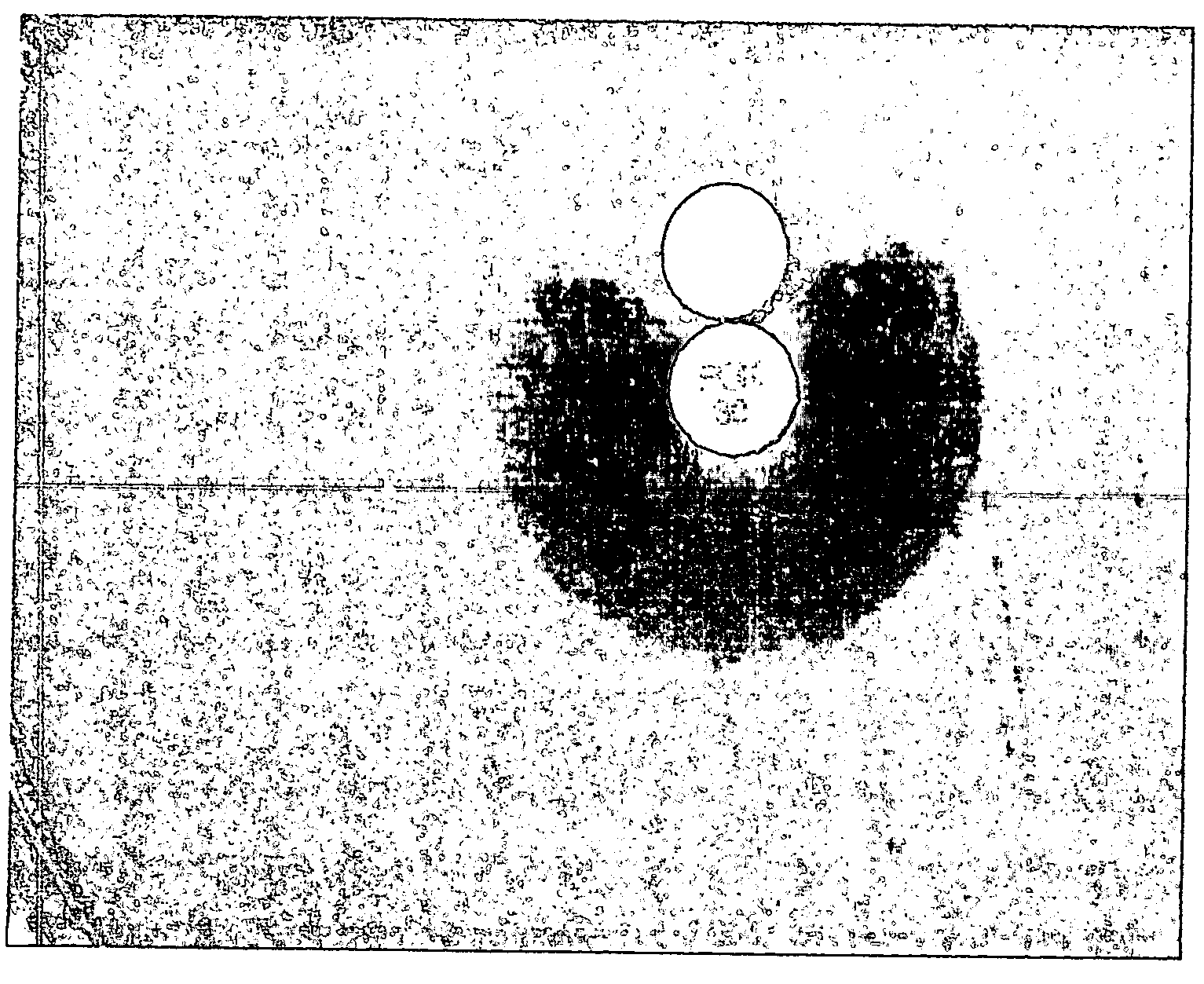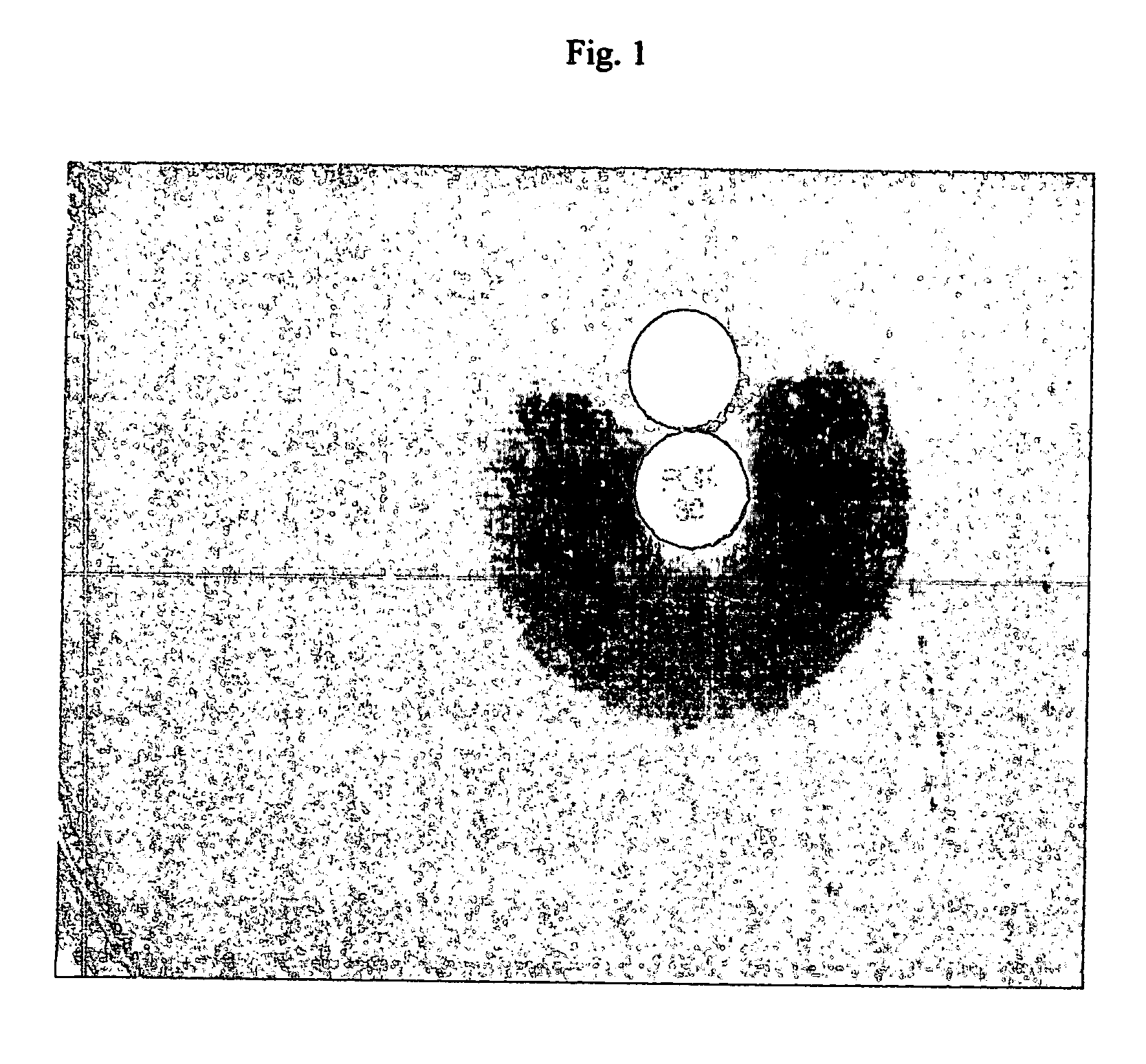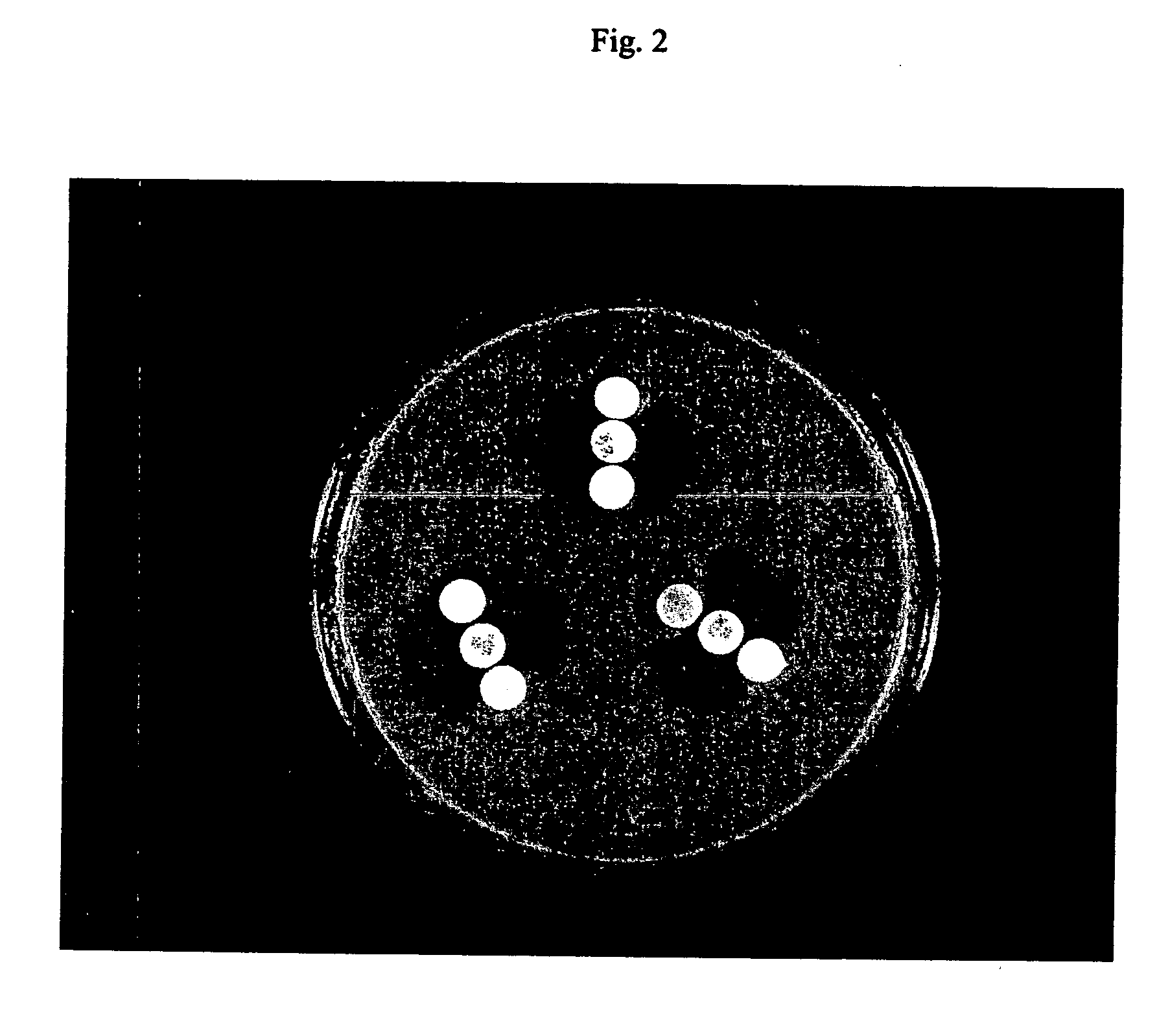Device and method for detecting antibiotic-inactivating enzymes
a technology of inactivating enzymes and devices, applied in the field of devices and methods for detecting antibiotic-inactivating enzymes, can solve the problems of failure to cure infections, significant problems, and failures, and achieve the effect of robust in vitro and facilitate the release of antibiotic-inactivating factors
- Summary
- Abstract
- Description
- Claims
- Application Information
AI Technical Summary
Benefits of technology
Problems solved by technology
Method used
Image
Examples
example 1
Determination of Release of Antibiotic-Inactivating Factors
[0070] In this Example, E. coli MISC 208 (which produces the extended spectrum β-lactamase SHV-2) was used as a test organism and nitrocefin was the substrate in spectrophotometric hydrolysis assays. The E. coli strain was harvested directly into 100 microliters of Mueller Hinton Broth and mixed with 100 microliters of the permeabilizing agent.
[0071] In the hydrolysis assay, units of activity are calculated as: Units=Change in optical density (OD) / minute×10Extinction coefficient
[0072] The hydrolysis assay was performed essentially as described by O'Callaghan et al., A.A.C. 1:283-288 (1972). Briefly, a 100 μM solution of nitrocefin was used as a substrate. The nitrocefin was prewarmed to 37° C. The hydrolysis assay was performed at 37° C. at a wavelength of 389.5 with an extinction coefficient of −0.024. An appropriate cuvette was filled with 0.9 ml of the prewarmed nitrocefin substrate and 100 μl of permeabilize...
example 2
Determination of Release of Antibiotic-Inactivating Factors
[0073] The experiment in Example 1 was repeated using E. coli MISC 208 and cefaclor as substrate in the hydrolysis assays.
Permeabilizing AgentUnits ofPreparationβ-lactamase Activity(Cefaclor as substrate)Benzalkonium chloride 200 μg / ml16Polymyxin B 10 μg / ml3.8Polymyxin B 30 μg / ml15TE79
example 3
Determination of Release of Antibiotic-Inactivating Factors
[0074] The study in Example 1 was repeated using E. coli V1104 to evaluate a variety of permeabilizing agents. Nitrocefin was the hydrolysis substrate.
Permeabilizing AgentUnits ofPreparationβ-lactamase Activity(Nitrocefin as substrate)Aztreonam210No reagent / 0° C.214No reagent / 45° C.0Ceftazidime196Piperacillin202
[0075] Other exemplary microorganisms that can be used in the determination of release of antibiotic-inactivating factors include those in the following Table:
UnitsStrainEnzyme(vs nitrocefin)E. coli V1104202E. coli 165*pI 5.95 TEM ESBL43MG32TEM-1 + TEM-12349K. pneumoniae V1102227
PUM
 Login to View More
Login to View More Abstract
Description
Claims
Application Information
 Login to View More
Login to View More - R&D
- Intellectual Property
- Life Sciences
- Materials
- Tech Scout
- Unparalleled Data Quality
- Higher Quality Content
- 60% Fewer Hallucinations
Browse by: Latest US Patents, China's latest patents, Technical Efficacy Thesaurus, Application Domain, Technology Topic, Popular Technical Reports.
© 2025 PatSnap. All rights reserved.Legal|Privacy policy|Modern Slavery Act Transparency Statement|Sitemap|About US| Contact US: help@patsnap.com



